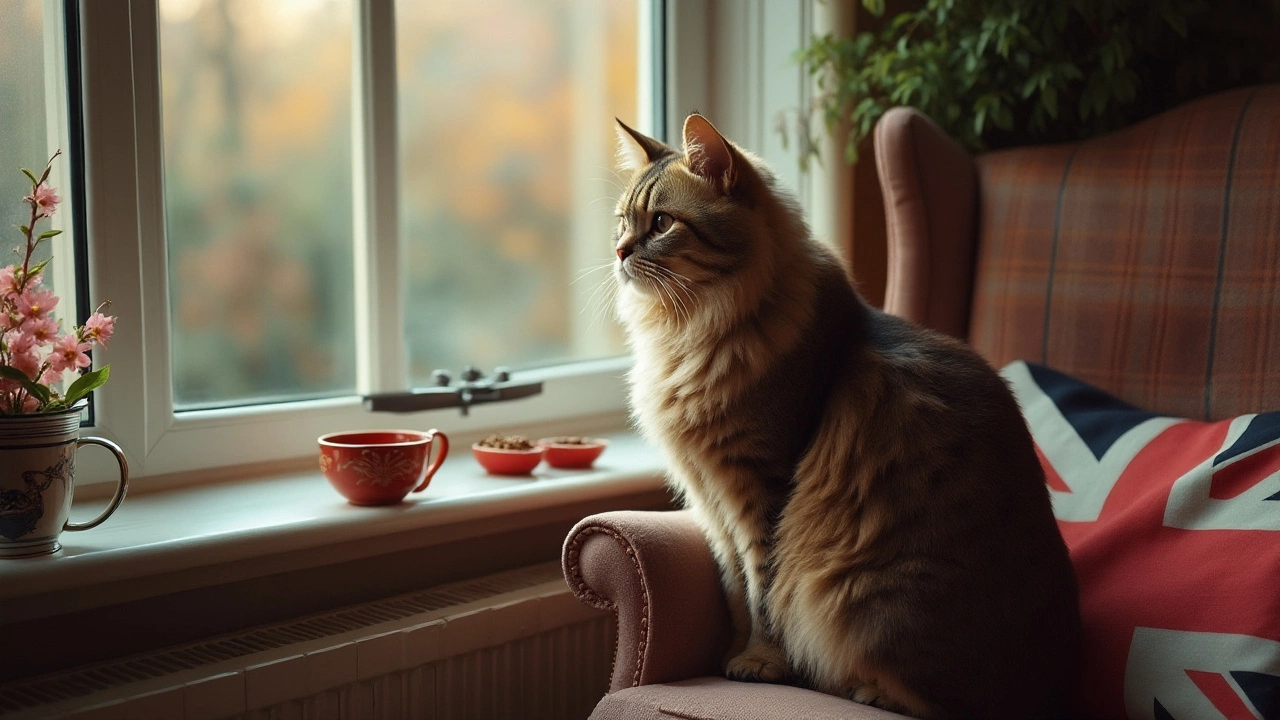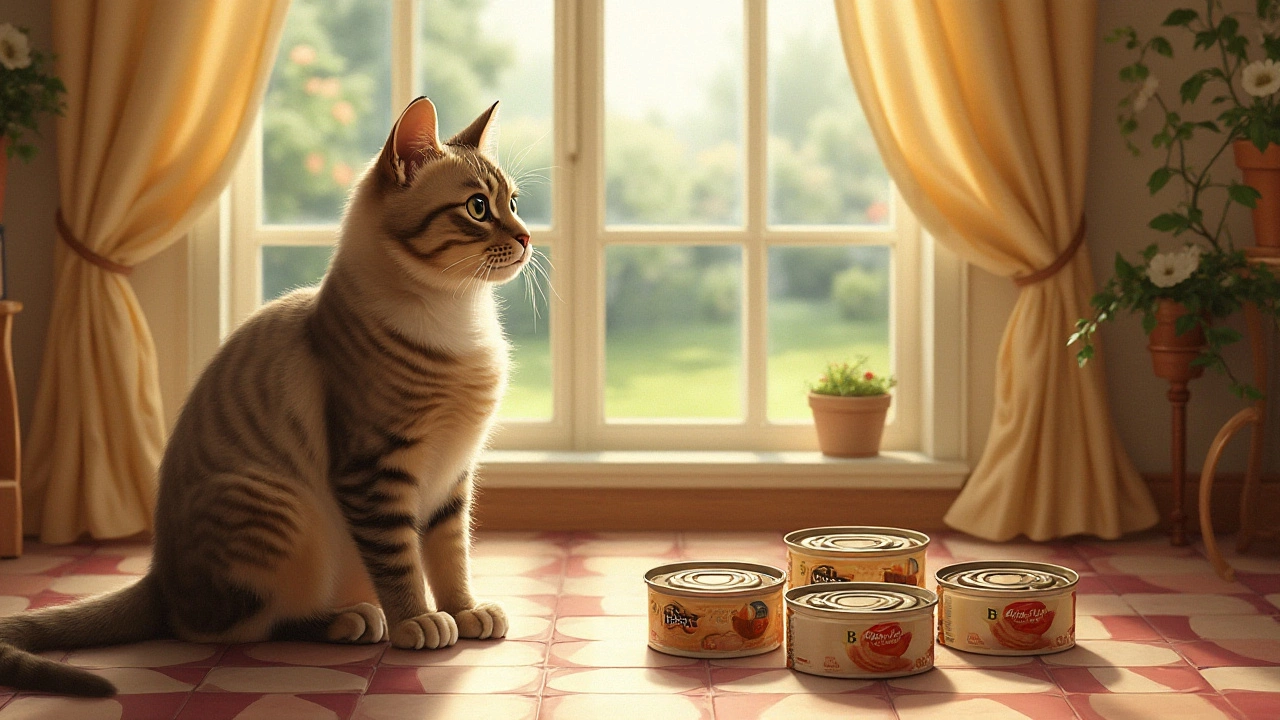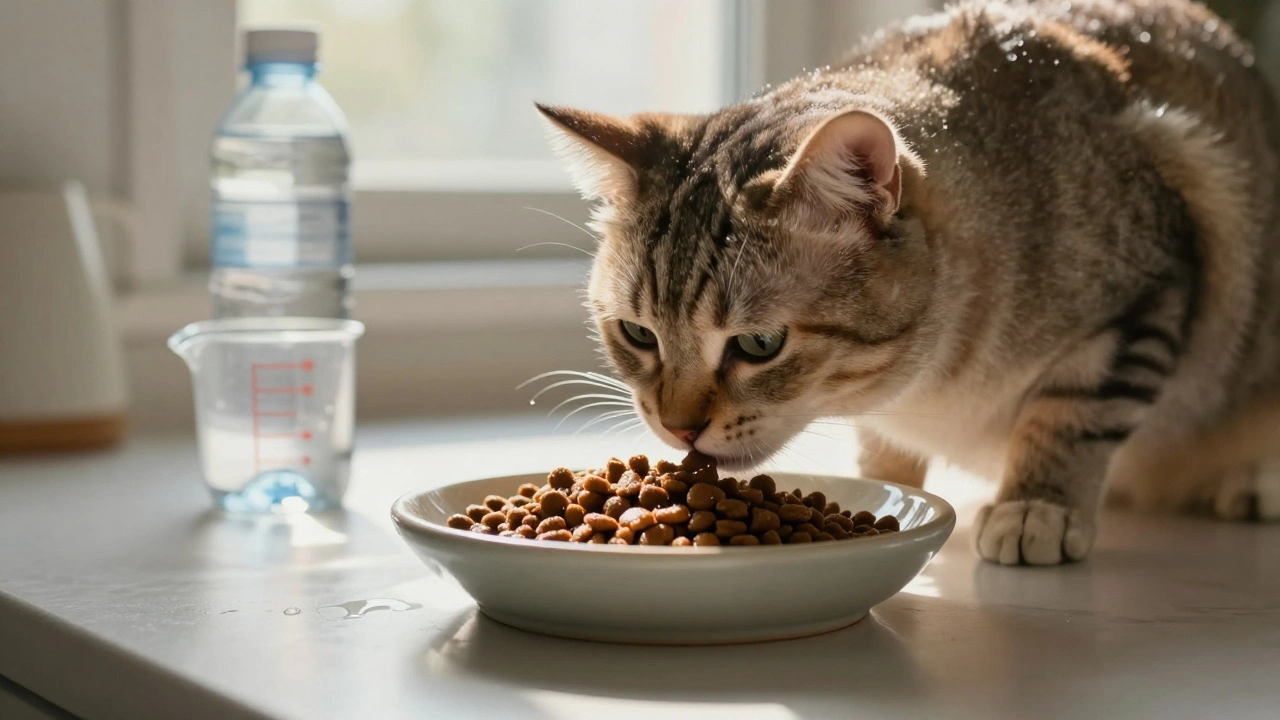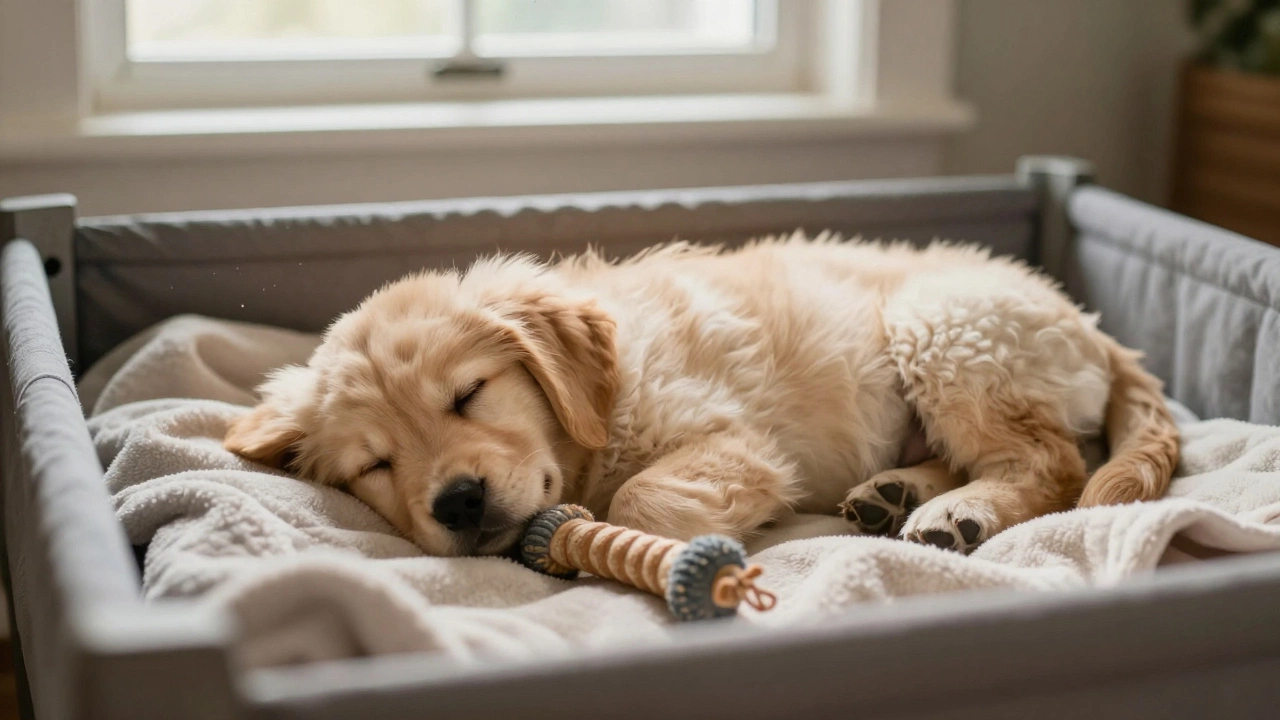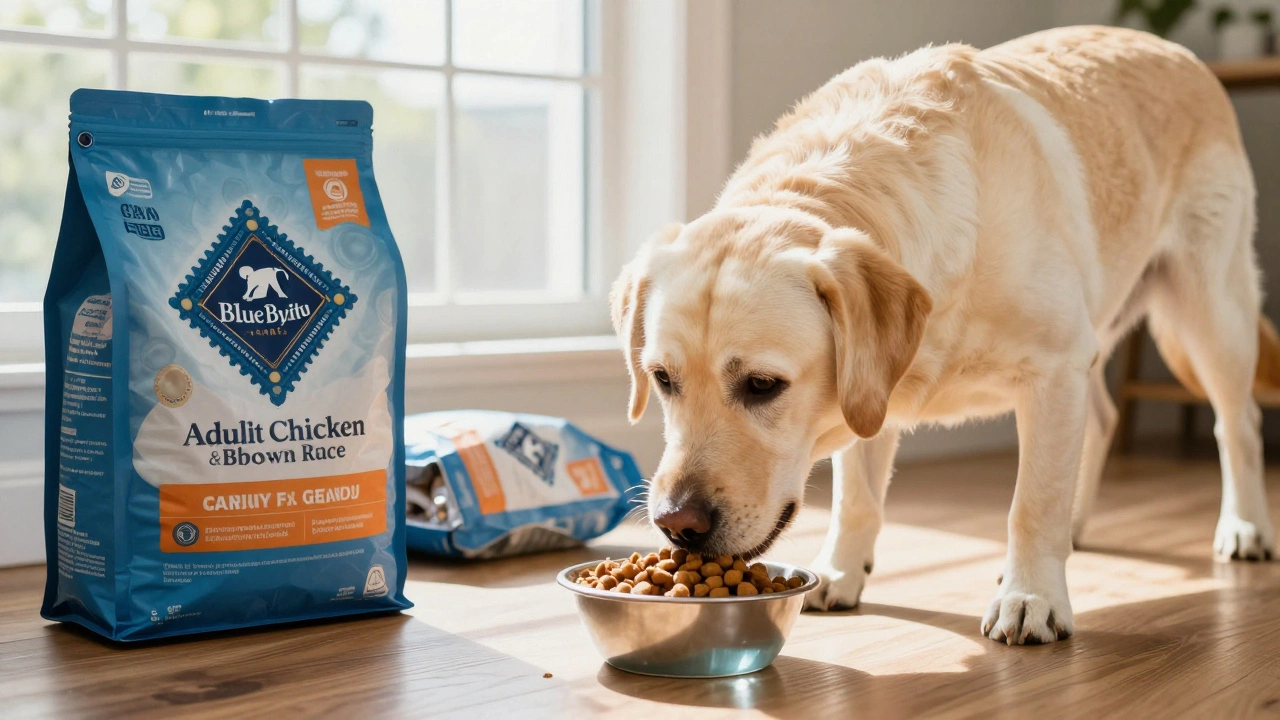Cats are fascinating creatures, often exhibiting behaviors that leave even seasoned pet owners in wonder. Among the numerous questions cat lovers have, one often arises—do our feline friends know when they're full? As it turns out, understanding a cat’s sense of satiety involves a mix of biological instincts and learned behaviors.
This exploration into feline eating habits highlights insights from experts and blends them with practical advice for everyday care. By unraveling the mysteries of how and why cats eat, we aim to equip you with the knowledge to keep your furry friend healthy and happy.
- Understanding Feline Eating Behaviors
- The Biological Mechanisms of Satiety in Cats
- Common Mistakes in Feeding Cats
- Observing Your Cat's Eating Habits
- Tips for Promoting Healthy Eating in Cats
Understanding Feline Eating Behaviors
When we start exploring the eating habits of cats, it's like stepping into a world teeming with instinct and tradition. Felines, even those living comfortably in our homes, carry remnants of their wild ancestors. In the wild, a cat's diet is dictated by the prey it catches, leading to eating patterns based on opportunity rather than routine. Thus, a solitary wild cat might feast heavily after a successful hunt, not knowing when the next catch would come. This instinctual behavior sometimes manifests in domestic cats as a tendency to eat voraciously when food is readily available. Yet, not all cats dive into their meals with equal gusto. A balanced perspective considers their individual personalities as well, which can range from the picky nibbler to the voracious eater.
Research from prestigious institutions often supports this notion of inherited behaviors. According to an article by Dr. Debra Zoran, a clinical nutritionist, “The small feline digestive system is designed for multiple small meals of prey at various times of the day and night.” This explains why cats often prefer several small portions throughout the day, a fact that many cat owners have observed when their pets linger around food bowls, nibbling bits here and there. One striking aspect of a cat's eating behavior is the influence of environment and social factors. For example, in a multiple-cat household, a feline might adjust its eating pattern to either compete for food or to avoid another cat's presence at meal times, depending on the pecking order. Social dynamics, therefore, have a tangible impact on how a cat consumes its meals.
Moreover, studies suggest that the time of day can affect how a cat engages with food. Twilight, for example, is an active period for cats, a reflection of their crepuscular nature. In contemporary homes, meal times have often aligned with human schedules, but understanding the intrinsic activity cycles of your cat can significantly assist in fostering better eating habits. This is pertinent when ensuring your pet receives the nutrition it needs without resorting to overeating, thus maintaining optimal cat health. Also, offering varied and engaging feeding routines could stimulate their innate curiosity and dietary satisfaction.
For some owners, managing their cat’s eating habits might involve using feeding puzzles or automatic feeders, which not only regulate portions but also cater to their intellectual engagement. Essentially, understanding these patterns, alongside using evidence-based information, allows us to optimize feeding practices and ensure our cats are happy and healthy. For example, a study published in the Journal of Animal Science uncovered that when given the choice, cats tend to select a diet low in carbohydrates, echoing the composition of their natural prey.
The Biological Mechanisms of Satiety in Cats
Understanding the satiety mechanisms in cats pulls us into the intriguing world of feline physiology, where ancient instincts meet modern-day living. At the core of this process is the role of the brain, particularly the hypothalamus, which functions as a control center for hunger and satiety in many animals, including our beloved cats. This small yet powerful region responds to chemical signals within the bloodstream, managing food intake and energy resources. Critical hormones are involved, such as leptin and ghrelin. Leptin, produced by fat cells, often sends signals to the brain indicating a state of fullness, serving as a potential satiety hormone. Ghrelin, on the other hand, sends hunger signals when the stomach is empty. The balance between these hormones is vital, but it can be influenced by numerous factors including genetics, age, and even the cat's level of physical activity.
Efficiency in these signaling processes can vary markedly from one cat to another. Some cats have a more sensitive response to leptin, signaling satiety quickly, while others may not—which can sometimes lead to overeating. It echoes the complexity of individual dietary habits in humans as well. Interestingly, studies have shown that domestication may have modified cats' natural eating instincts to some extent, as they no longer need to hunt and control portions based on prey availability. While outdoor cats might naturally maintain their weight through increased activity, indoor cats are more prone to lifestyle-related changes. Indeed, these adaptations might explain why some cat owners find themselves battling their pets' burgeoning waistlines.
Dr. Sarah Ellis, a specialist in feline behavior and science, once stated, "Modern domestic cats have inherited a complex appetite regulation system from their wild ancestors, but they've also developed adaptation traits to our provided lifestyles."This quote underscores how nature and nurture intersect in influencing a cat's eating habits today. It's essential for pet health to be vigilant about these hormonal cues and behavioral tendencies. Observing your cat's eating patterns closely—such as how often they ask for food beyond regular meals—can offer insights into whether their natural satiety signals are functioning as intended. It's also worth noting that sudden changes in eating habits could be indicative of an underlying health issue, necessitating a timely visit to the vet. Understanding these biological mechanisms not only helps in crafting balanced meal plans but fosters a deeper connection with your feline companion.
To provide some context as to how common these eating habits can become a health issue, studies show that an estimated 58% of cats in established households are overweight as per recent veterinary surveys. These statistics portray the importance of identifying how satiety works—or sometimes fails—in our furry family members. Regular check-ups with veterinarians can assist in ensuring that your cat's dietary needs are met without excesses. Adjusting portion sizes and monitoring weight regularly can be beneficial steps to counteract dietary pitfalls. Armed with knowledge about their biology, feeding your cat becomes a tailored experience, allowing their natural satiety mechanisms to flourish.
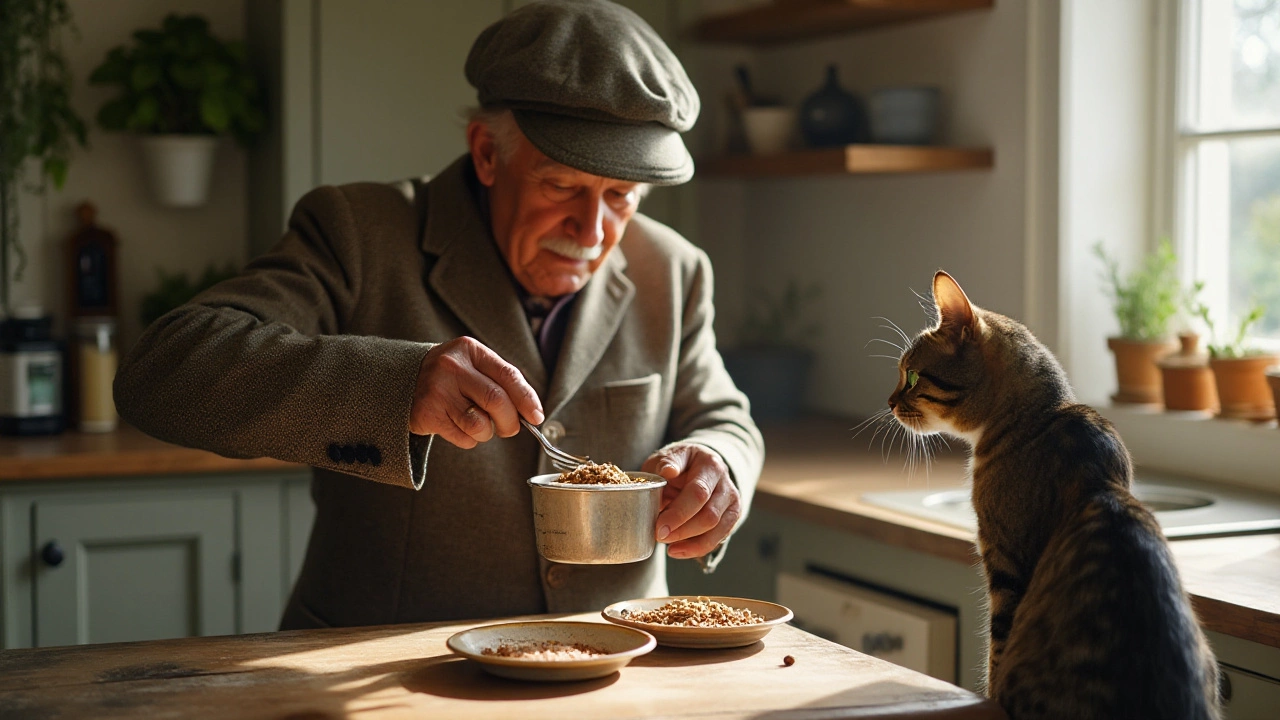
Common Mistakes in Feeding Cats
Feeding a cat might seem straightforward, but several common pitfalls could impact your cat's health and wellbeing. This topic encompasses various factors, from the type and quality of food to understanding a cat's instinctual eating habits. One significant error many cat owners make is not considering the feline nutritional essentials. Unlike dogs, cats are obligate carnivores, meaning they require a diet rich in animal proteins. Feeding them food with insufficient protein can lead to a lack of essential nutrients, affecting their overall health. In the wild, cats opt for diets primarily composed of meat, and failure to replicate this in domestic settings might cause malnutrition.
Another common mistake includes the method of feeding. Many pet owners leave food out all day, mistakenly believing that cats, being smaller than most dogs, can self-regulate their eating. While free-feeding might work for some cats, it can potentially lead to overeating and obesity for others. Instead, structured meal times, where you serve precise amounts of food based on your cat’s size, age, and activity level, help maintain a healthy weight. This feeding strategy aligns well with their natural hunting habit, where they catch small prey several times a day.
Feeding Variety and Consistency
Consistency in diet is crucial yet often misunderstood. Cats prefer established routines, and sudden changes in diet can lead to digestive issues or food aversion. Imagine introducing a new brand of food; without a gradual transition, your cat might reject the unfamiliar flavors. To avoid this, always introduce new foods slowly, mixing small amounts with the existing diet and gradually increasing the proportion. Maintaining variety without abrupt changes can offer nutritional balance while keeping your cat's palate engaged.
Moreover, many cat owners make the mistake of treating cats like small humans regarding diet. Giving cats human food or excessive treats might seem like a token of affection, but it can be detrimental. Human foods often contain ingredients harmful to cats, such as chocolate, garlic, and onions. Excessive treats can also disrupt their balanced diet, leading to obesity and related health issues. Treats should make up no more than 10% of a cat's daily caloric intake to ensure they don't interfere significantly with their main meals.
Nutritional experts often advise, "Monitor your pet’s weight and adjust feeding amounts accordingly as part of a healthy lifestyle," which speaks volumes about proactive pet care.
Lastly, water is a frequently overlooked component of a cat’s diet. While cats may obtain moisture from wet food, they still require constant access to fresh water. Dehydration can lead to urinary tract problems and other health issues. Ensuring your cat has a clean water source at all times is vital, often necessitating a second dish if your cat spends time in several areas of your home. Investing in a cat water fountain can encourage drinking, tapping into a cat's natural inclination for running water.
Observing Your Cat's Eating Habits
Understanding your cat’s eating habits can be an insightful journey, offering clues to its health, happiness, and even its instincts. You might notice that some cats graze throughout the day, much like tiny aristocrats nibbling on choice delicacies. Others may wolf down their meals with surprising gusto, only to seek a sun-drenched nap moments later. Whatever the case may be, the pattern and manner of your cat’s eating behavior can tell you plenty about what’s going on beneath that furry exterior. A cat's eating habits can indicate several things, including nutritional needs, emotional states, and potential health concerns, making it essential for owners to pay close attention. Regular observation can prevent possible health issues, such as obesity or eating disorders, contributing positively to their overall wellbeing.
Cats, by nature, are descendants of wild hunters, which influences how they approach their meals. Unlike dogs, who might eat as if there's no tomorrow, cats often exhibit more discerning tastes. By observing your cat at mealtime, you can ensure they're getting the nutrition they need without the risk of overeating. Start by setting up a consistent feeding schedule, as cats thrive on routine. Notice whether your cat seems overly hungry between meals or tends to leave food behind. This can help you adjust portion sizes and better understand its dietary needs. Engage with your cat during feeding; observe how it acts before, during, and after eating. Does it seem anxious, relaxed, or unusually inactive? All these signals are essential to understanding its physical and emotional health. Cats are notorious for masking illnesses, so changes in eating behaviors can be one of the first indicators of potential problems.
"Keeping an eye on your cat’s eating habits isn't just about feeding—it's about ensuring their health and happiness," noted renowned veterinarian Dr. Amy Shojai in her work. "Cats are often adept at hiding discomfort, but subtle changes in their appetite can reveal much."
Being observant can also help you identify quirks and preferences—perhaps your cat favors a particular type of dry food or is suddenly turning up its nose at what used to be a favored wet food brand. Recognizing these patterns can guide you to make dietary adjustments that cater to your pet’s preferences without compromising nutrition. Additionally, watch for any signs of gastrointestinal distress or food allergies, which could manifest as skin irritations or frequent vomiting. Understanding and acting on your observations could make a world of difference in your cat's life.
Sometimes, the best insights come from details that might initially seem insignificant. Is your cat more likely to eat when it has company, or does it prefer solitude? Does it eat more during certain times of the day? Answering questions like these can enrich your understanding of your cat’s unique personality. Maintain a record of these observations over time; they could serve as valuable information if your cat’s eating habits need professional attention. Document any patterns or anomalies you might notice, which can be incredibly beneficial when discussing your pet’s health with a vet. Moreover, by closely connecting with your furry friend, you'll better anticipate its needs and respond in the best possible way.
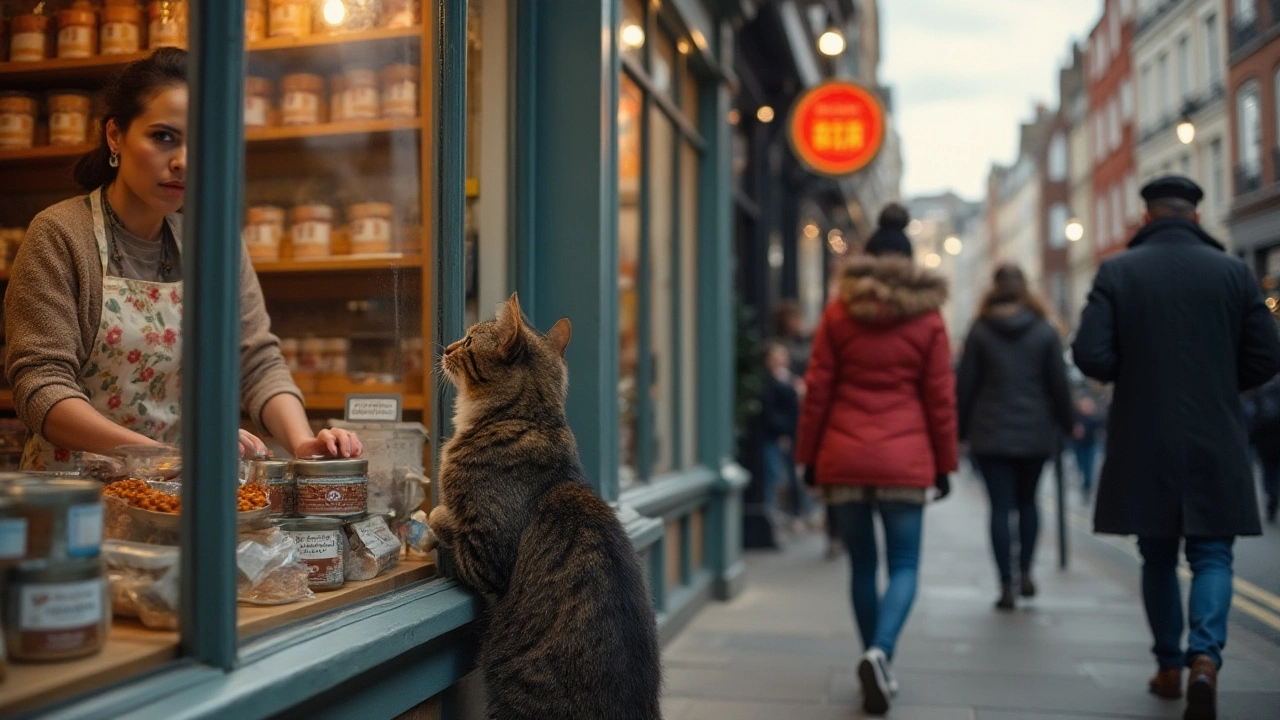
Tips for Promoting Healthy Eating in Cats
Getting your cat on a path to healthy eating is not as daunting as it might seem. Many of these furry critters have a strong internal sense of when they are full, but they naturally rely on their owners to provide meals that meet their dietary needs. The key to fostering a positive eating routine involves understanding your cat’s instincts and health requirements. Cats are obligate carnivores, meaning their diet relies heavily on meat. This doesn't only provide them with the necessary proteins but also gives them essential amino acids like taurine, which is crucial for their heart and vision. When choosing food, opt for brands that explicitly list meat as the primary ingredient. Avoid those with fillers such as corn and grains, which offer little nutritional value to your feline companion.
Another important aspect of promoting healthy eating is managing portions and meal timings. Cats are naturally inclined to eat several small meals throughout the day, mimicking their hunting patterns in the wild. Free-feeding, or leaving food out all day, can sometimes lead to overeating and obesity. Consider setting up a routine with two to three measured meals a day. Regularly consult your veterinarian to determine the right amount for your specific cat based on age, weight, and activity level. This helps prevent them from getting too hungry or too full. You might be interested to know that as cats age, their metabolism slows down, and their caloric needs may decrease. Older cats often benefit from specially-formulated foods that cater to their changing nutritional requirements.
Using enrichment tools during feeding can also encourage healthy eating behaviors. Feline nutrition experts recommend puzzle feeders and interactive toys that simulate the hunting experience. These tools make mealtime more engaging, slow down rapid eating (which can cause digestive issues), and keep your cat mentally stimulated. Remember, cats thrive on novelty, so rotating toys or moving them to different spots can keep their curiosity piqued. By transforming eating into an interactive experience, you're addressing both physical and mental health needs, making your cat thank you with those delightful purrs.
"Cats are not just pets; they are discerning companions, and paying attention to their dietary and mental needs makes a world of difference in their quality of life." – Dr. Jane Brunt, Feline Welfare Expert
Lastly, never underestimate the power of hydration. Cats often get the bulk of their water intake from their food in the wild. Including some wet cat food in their diet can help ensure they stay hydrated. Alternatively, encouraging them to drink more water can be done by providing fresh water daily using a cat water fountain. Cats are notoriously fussy drinkers, often preferring running water, and fountains stimulate their interest and promote adequate consumption. You could even experiment with a few poppy ice cubes in their dish to make drinking more enticing. Monitoring their hydration is key, as inadequate water intake can lead to urinary tract issues which are common in felines. Remember, every cat is unique, and tailoring these tips to fit the personality and lifestyle of your cat will go a long way. With these strategies, you'll pave the way for your cat's lifelong health and happiness.

